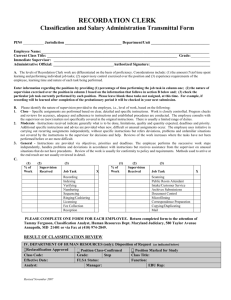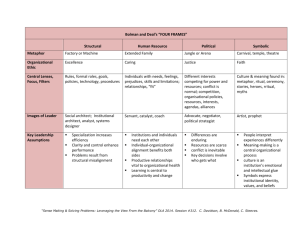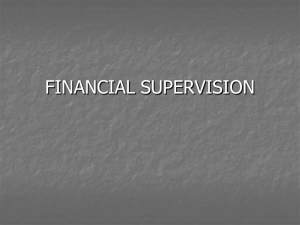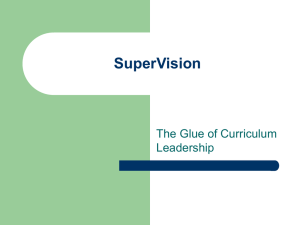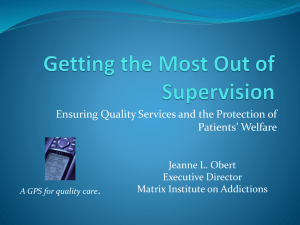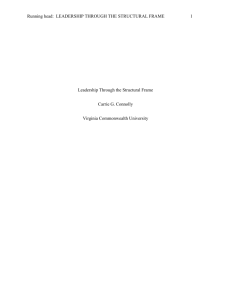Successful Supervision Strategies
advertisement
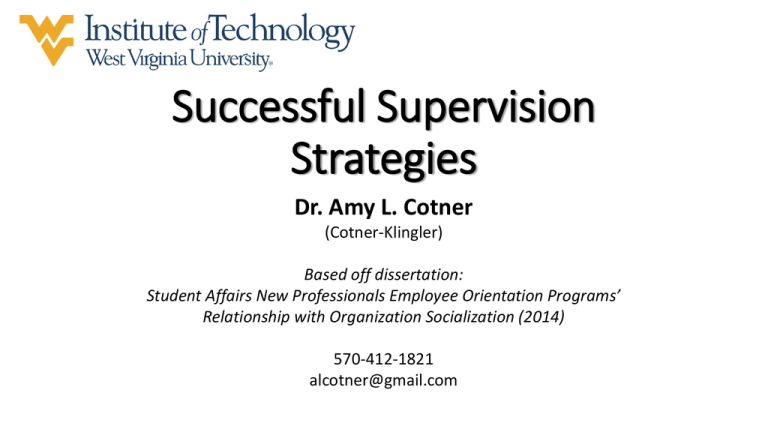
Successful Supervision Strategies Dr. Amy L. Cotner (Cotner-Klingler) Based off dissertation: Student Affairs New Professionals Employee Orientation Programs’ Relationship with Organization Socialization (2014) 570-412-1821 alcotner@gmail.com What is Supervision? • “a management function intended to promote the achievement of the institutional goals and to enhance the personal and professional capabilities and performance of staff” (Winston & Creamer, 1997, p. 42) Strong Supervisor • one who can enable professionals to understand the vision, mission, and goals of the division and organization and instruct them on the needs of their position. • offer constructive feedback. Through feedback professionals can develop problem-solving strategies in their work and can develop greater confidence as they develop their skills. (Cilente, Henning, Skinner-Jackson, Kennedy, & Sloane, 2006) • “provide insight into the larger context of work” (Tull, 2009, p. 129). Benefits of Effective Supervision • Higher productivity of employee • Loyalty (Supervisor and institution) • Employee’s improved self-confidence (autonomy) • Retention of employee • Positive communication Supervision Style Assessment Effective Supervision Styles • Winston and Cramer • Bolman and Dean • Situational Leadership Winston and Creamer Bolman and Dean Style Structural Characteristics Role is formal; hieracharical with responsibilities; expectations are clear. There is a value for documentation, policy and protocol Human Resources Catalyst and servant relationship; sensitive to human needs; promotion based on high performance; delegation and training provided; feedback is valued Political Organizational achievement viewed through power, influence, management of others; formal/informal coalition built. Decisions made on power of individual group Symbolic Strong use of storytelling, metaphors, ceremony, and rituals to help supervisee understand organizational culture. Bolman & Dean, 1997 Situational Leadership Who are you supervising? Case Studies • Name 2 benefits to effective supervision. Reflection • Name a supervisory strength you have. • Identify a characteristic of a supervisory style you wish to improve on, over the next year. References Bolman, L. G., & Deal, T. E. (1997). Reframing organizations: Artistry, choice, and leadership (2nd ed.). San Francisco, CA: Jossey-Bass. Cilente, K., Henning, G., Skinner-Jackson, J., Kennedy, D., & Sloane, T. (2006). Report on the new professional needs study Washington, DC: American College Personnel Association. Retrieved from http://www.myacpa.org/research/newprofessionals.php Hersey, P., Blanchard, K.H, & Johnson, D.E. (2012). Management of organizational behavior (10th ed)). Upper Saddle River, NJ: Prentice Hall. Schneider, R. S. (1998). Supervisor as architect, catalyst, advocate and interpreter. In M. J. Amey & L. M. Ressor (Eds.), Beginning your journey (pp. 37-52). Washington, DC: National Association of Student Personnel Administrators. Tull, A. (2009). Supervision and mentorship in the socializaton process. In A. Tull, J. B. Hirt, & S. A. Saunders (Eds.), Becoming socialized in student affairs administration: A guide for new professionals and their supervisors (pp. 129-151). Sterling, VA: Stylus. Winston, R. B., Jr., & Creamer, D. G. (1997). Improving staffing practices in student affairs. San Francisco: Jossey-Bass.
